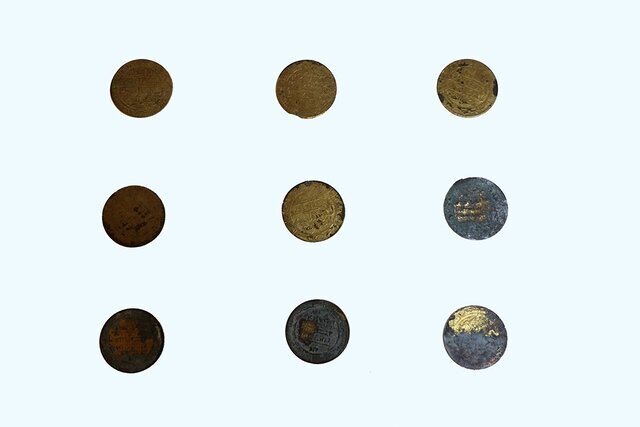Ancient coins recovered from rail passenger

TEHRAN – Iranian authorities have confiscated nine ancient coins from a rail passenger in southern Iran.
“With the cooperation of Bandar Abbas railway police, a total of nine coins were seized in a brief inspection after officers suspected a traveler,” the Hormozgan tourism chief said on Sunday.
“Early estimates suggest the coins date from the early Islamic era,” Sohrab Banavand stated.
In the 7th century, the Muslim conquest of Persia, also known as the Arab conquest of Iran, led to the fall of the Sasanian Empire of Iran in ca. 651 and the eventual decline of the Zoroastrian religion. Experts say the rise of Muslims coincided with an unprecedented political, social, economic, and military weakness in Persia.
In terms of coins and coinage, the conquering Muslims at first mimicked the coinage of their predecessors. On the one hand, they issued gold and copper pieces imitated from contemporary Byzantine coins, modifying the cross on the reverse of the latter somewhat to suit Muslim sensibilities in the western provinces.
On the other hand, in the eastern provinces, the Arab governors issued silver dirhams that were copies of late Sasanian coins (mostly those of Khosrow II; with the addition of short Arabic inscriptions on the margin and often the name of the Arab governor in Pahlavi; even the crude representation of the fire altar was retained.
It is worth mentioning that in about 220 CE the Sasanian dynasty of Iran introduced the concept of thin flan coins, issues that were struck in relief on both sides.
AFM
